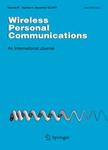版权所有:内蒙古大学图书馆 技术提供:维普资讯• 智图
内蒙古自治区呼和浩特市赛罕区大学西街235号 邮编: 010021

作者机构:Natl Inst Technol Dept Elect & Commun Engn Tiruchirappalli Tamil Nadu India Univ Saskatchewan Dept Elect & Comp Engn Saskatoon SK S7N 5A9 Canada
出 版 物:《WIRELESS PERSONAL COMMUNICATIONS》 (无线个人通信)
年 卷 期:2013年第68卷第2期
页 面:265-280页
核心收录:
学科分类:0810[工学-信息与通信工程] 0809[工学-电子科学与技术(可授工学、理学学位)] 08[工学]
基 金:M. Raja received his B.Eng. Degree in Electronics and Communication Engineering from Anna University Chennai India in 2005 and the M.Eng. Degree in Digital Communication and Networking from Anna University Chennai India in 2007. Currently he is pursuing his Ph.D. in Wireless Communication in the Department of Electronics and Communication Engineering National Institute of Technology (NIT) Tiruchirappalli India. He is a recipient of Canadian Commonwealth Scholarship Award-2010 for Graduate Student Exchange Program in the Department of Electrical and Computer Engineering University of Saskatchewan Saskatoon SK Canada. His research interests include orthogonal frequency division multiplexing (OFDM) multiple-input and multiple-output (MIMO) systems diversity and beamforming techniques and channel estimation. He published his research papers in refereed international journals and international and national conferences
主 题:Channel state information (CSI) Mean-square error (MSE) Multiple-input multiple-output (MIMO) Linear precoding Spatial multiplexing Improper modulations
摘 要:This paper considers joint transceiver designs for single-user multiple-input, multiple-output systems employing improper constellations such as binary phase shift-keying and M-ary amplitude shift-keying (M-ASK). Proposed are novel joint linear transceivers that minimize the total mean squared error of the symbol estimation at the output of the decoder. The joint linear transceiver designs are carried out for both cases of perfect channel state information (CSI) and imperfect CSI at the transmitter and receiver. For the case of imperfect CSI, the channel model takes into account both transmit and receive correlations as well as the channel estimation error. The superiority of the proposed transceivers over the previously-proposed designs is verified by simulation results.